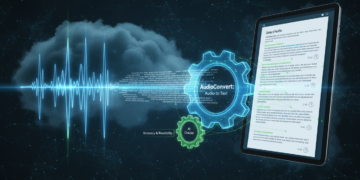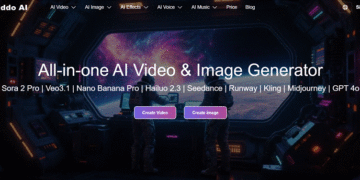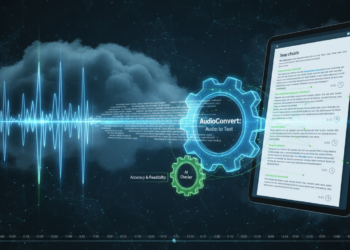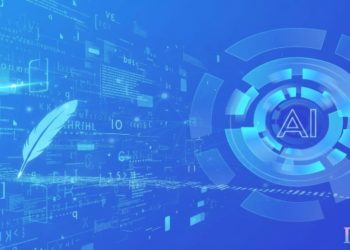1. Start With the Weird: Superposition Isn’t Just a Party Trick
Quantum AI doesn’t begin with code. It begins with physics that refuses to behave. Superposition—where a quantum bit (qubit) isn’t one or zero, but both, until measured—isn’t mystical. It’s inconvenient. Especially if you’re trying to build a stable computer.
But this inconvenient principle might just be the key to computation that actually understands complexity. Classical bits toggle. Qubits float. That’s what gives quantum systems their punch—handling multiple states in parallel, like trying every key in a lock at once, instead of one by one.
Throw AI into this stew, and you’re not just asking questions. You’re letting machines explore possible realities, score the probabilities, and learn from the shape of uncertainty. It’s not faster. It’s deeper.
Still, it’s hell on engineers. Keeping a qubit in superposition requires near-absolute zero temperatures and noise isolation bordering on the neurotic. And that’s before you try to scale it. But here’s the truth: if you want to simulate nature, it helps to start with something that plays by its rules.
2. Entanglement: Communication Without Communication
Entanglement isn’t a metaphor. Two qubits become linked—change one, the other reacts, no matter the distance. Einstein called it “spooky action at a distance,” which is a polite way of saying, “we don’t fully understand this, but it works.”
In Quantum AI, entanglement is leverage. It lets systems correlate states across dimensions without traditional wiring. In practice, that means a quantum neural network can represent and process relationships that classical models would struggle to map without choking on compute.
It’s not about speed. It’s about nuance. Entanglement helps Quantum AI systems consider dependencies, feedback loops, and intertwined variables that matter in fields like molecular modelling, supply chain logistics, and cryptography.
But don’t believe the headlines. No one’s beaming thoughts across galaxies. Entanglement doesn’t mean communication—it means correlation. The data still needs a classical channel. And measuring the system still collapses it. Quantum AI isn’t telepathy. It’s just statistically weirder maths.
Which makes it—somehow—more useful.
3. Intelligence in the Age of Quantum: What Learning Looks Like Now
AI already struggles with explainability. Quantum AI takes that problem, feeds it into a particle accelerator, and hands you back a probability cloud. But that doesn’t mean it’s nonsense. It just means you need to rethink how you define “learning.”
Quantum-enhanced machine learning models don’t just optimise weights and biases. They manipulate entire probability amplitudes. Algorithms like the Variational Quantum Classifier (VQC) and Quantum Support Vector Machines are designed to spot hidden structures in data that classical methods either miss or flatten into noise.
It’s not about copying the brain—it’s about using quantum properties to detect patterns the brain can’t. Or won’t.
Still, most of these systems aren’t running on full quantum hardware. They’re hybrids—classical front ends with quantum backbones, running on simulators or limited qubit machines like IBM’s Qiskit or Xanadu’s PennyLane. It’s the computational version of learning to drive in a car that might disappear if you hit a pothole.
The hype is real. So is the math. The only thing missing is time—and possibly funding that survives the next interest rate hike.
4. Quantum AI Trading: Markets Meet Measurement Uncertainty
Let’s not dress this up—trading is gambling in a nice suit. The algorithms are trained on yesterday’s data to predict tomorrow’s chaos. Most lose money. Some lose sanity.
Quantum AI offers a new knife for this bloodsport. Not by predicting the future—no one can—but by reshaping how probability and correlation are analysed. Quantum-enhanced Monte Carlo simulations, portfolio optimisation using quantum annealers, and risk modelling via entangled states are already being tested in financial labs that don’t talk to journalists.
A few names are making noise—Multiverse Computing in Europe, and 1QBit across the pond. They promise better predictions, faster derivatives pricing, and real-time stress testing that doesn’t break when variables multiply.
But here’s the catch: these systems won’t democratise finance. They’ll concentrate edge. Whoever gets the quantum models right first won’t use them to share—they’ll use them to win. As always.
5. The Reality Check: Limits, Noise, and the Long Road Ahead
If you’ve read this far and think Quantum AI is ready for primetime, take a breath. Then another. The truth is less exciting and far more important.
Qubits are fragile. Most can’t stay coherent long enough to solve a Sudoku puzzle, let alone simulate a protein. Quantum error correction is still experimental. Hardware scalability is a brick wall engineers keep headbutting with a smile.
And the AI layer? It’s mostly research papers and lab-bound prototypes, running on simulator rigs that max out at a handful of qubits. We’re not talking Jetsons—we’re talking punch cards and lab coats. But those punch cards once became the internet. And those coats? They’re persistent.
The future of Quantum AI isn’t guaranteed. But the need is. Classical systems can’t crack the problems we’re stacking up: climate tipping points, pandemics, energy storage. They weren’t built for that. Quantum AI might be. If we can get it to work.
FAQ: The Stark Bits
What is superposition in plain terms?
A qubit in superposition holds multiple potential values until measured. It’s not both 0 and 1 in a magical way—it’s a real physical state governed by probability. Think of it as a coin spinning in the air, rather than flat on a table.
What’s entanglement useful for in AI?
It helps represent complex relationships between variables. In quantum systems, entangled qubits can reflect dependencies across data without needing to compute each one explicitly. That’s power—and risk.
Can we use Quantum AI today?
Only in limited settings. Some companies are testing quantum-enhanced models in fields like finance and chemistry. But most systems are still hybrid or experimental. Real-world applications are coming—but they’re crawling.
Is it all hype?
No. But most public messaging is. The underlying physics and algorithms are legitimate. The engineering challenges are brutal. That’s the truth most don’t say out loud.
Where do I go to read more—without being sold a dream?
Start with Quantum AI. It won’t sugar-coat the science or promise salvation. It’ll just show you what’s real—and what still isn’t.












































































